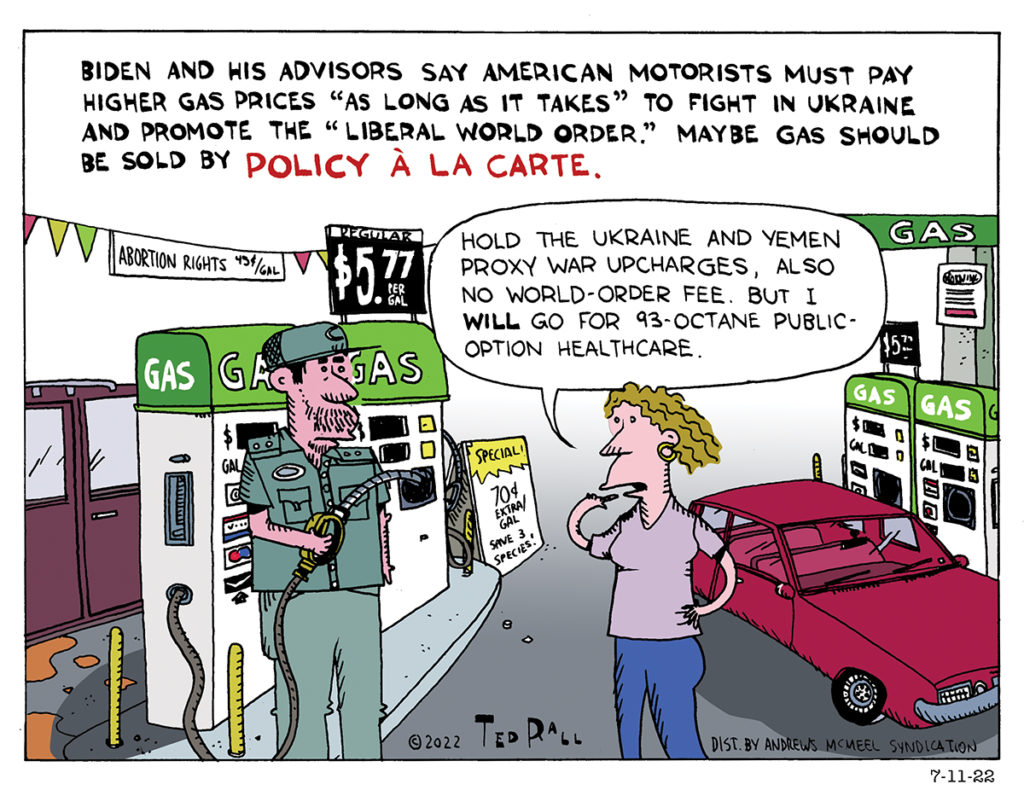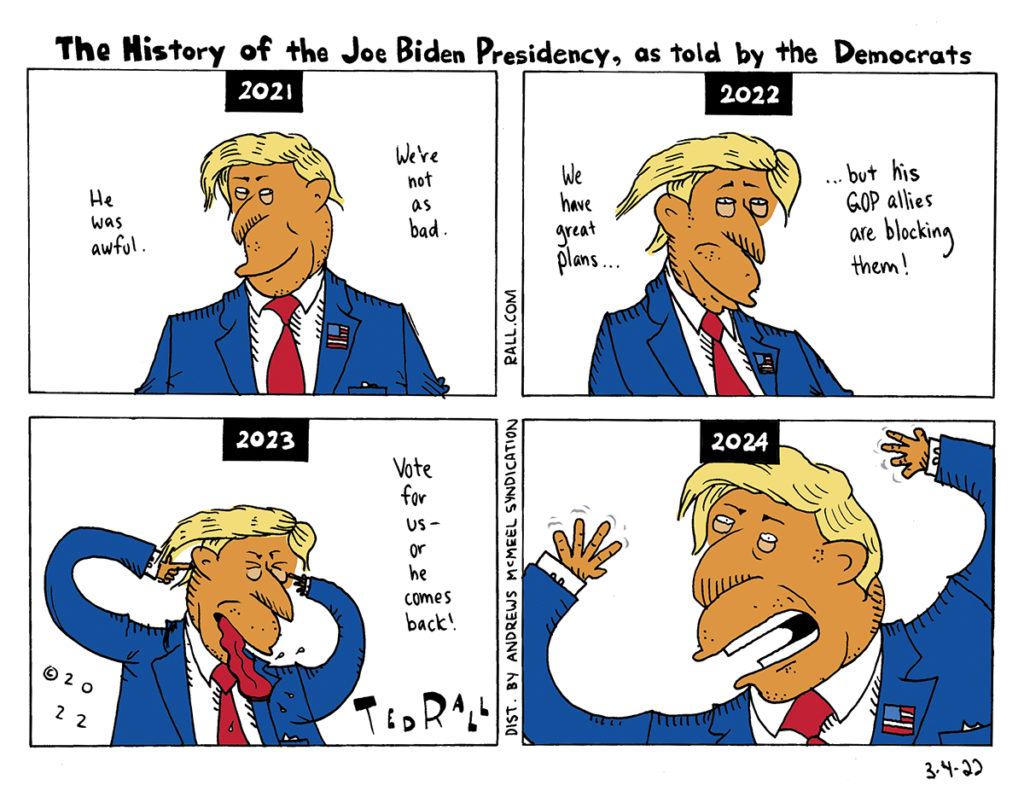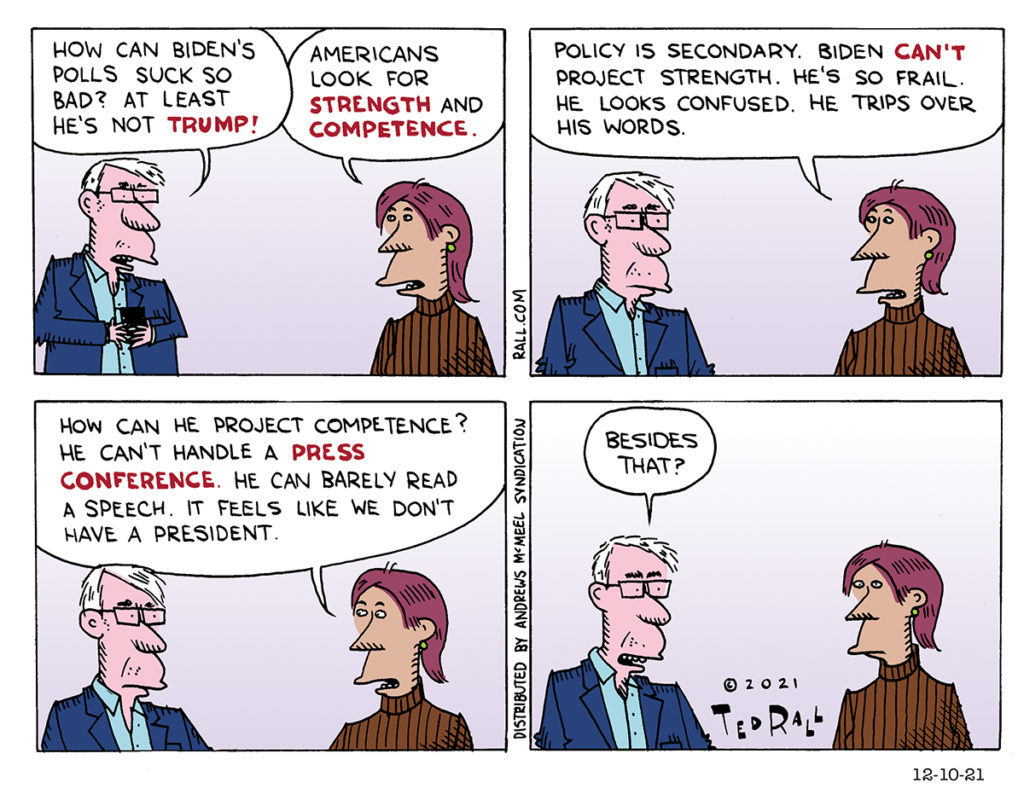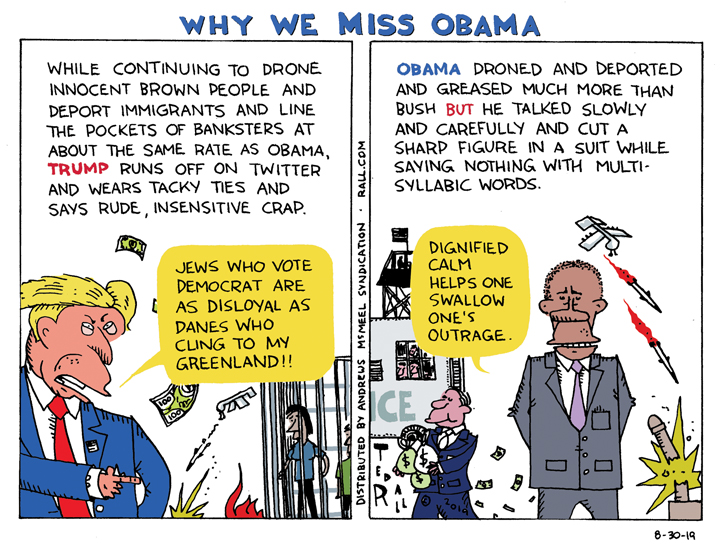President Joe Biden and his advisors tell American motorists that they must pay higher gas prices “as long as it takes” to fight in Ukraine and promote the “liberal world order.” Perhaps gas should be sold by which policies its prices are based upon.
Besides That?
Democrats seem confused that Joe Biden’s approval ratings are dropping precipitously despite the fact that the economy isn’t terrible, he is acting on COVID-19 and he has passed a significant infrastructure bill. They don’t seem to understand that voters look first and foremost for strength and leadership in the commander-in-chief, and that Joe Biden is inherently incapable of projecting those two qualities.
Who Lost Afghanistan? H.R.
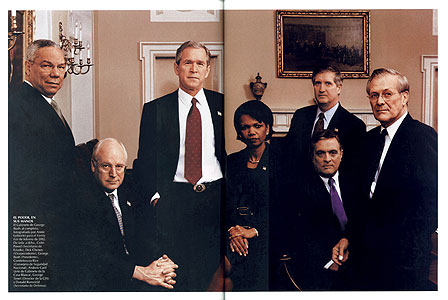
Congress, the media and many voters are asking military officials this week: how did we lose the Afghan war? I’ve been reading a book, “The Afghanistan Papers,” by Washington Post reporter Craig Whitlock, that shows how America messed up its longest war. (Every now and then, corporate media hypes something that’s actually worth reading.)
What it does not show, and what Pentagon leaders don’t seem to understand, is why.
Whitlock’s book reads like a synopsis of the many essays, books and cartoons I produced over 20 years, which were rejected by most newspapers and news websites because editors and producers refused to publish content that criticized the war.
For instance, Whitlock echoes my longstanding insistence that the Taliban posed no threat to the United States: “The Bush administration made another basic mistake by blurring the lines between Al Qaeda and the Taliban,” he writes. “The two groups shared an extremist religious ideology and a mutual support pact, but pursued different goals and objectives. Al Qaeda was primarily a network of Arabs, not Afghans, with a global presence and outlook… In contrast, the Taliban’s preoccupations were entirely local… The Taliban protected bin Laden and built a strong alliance with Al Qaeda but Afghans did not play a role in the 9/11 hijackings and there is no evidence they had advance knowledge of the attacks.”
We spent 20 years fighting people who meant us no harm and couldn’t have hurt us even if they had wanted to.
While the after-action investigation is necessary and interesting — I’m following it every day — the postmortem necessarily focuses on acts of commission and omission during the war, after it started. Perhaps because both major political parties were equally complicit in the invasion as a knee-jerk response to 9/11, or because both the Democrats and the Republicans are in the pockets of the defense industry, no one is questioning the decision to start the war, only its atrocious execution and embarrassing wind-down.
The sad truth is, the same screwups will continue. We will keep beginning wars against countries we ought to stay away from. We will make the same mistakes throughout the duration of those wars. Nothing will change because nothing has changed.
The reason is simple: personnel. Presidents keep hiring the wrong people to make decisions about war and peace. And the right ones never have a seat at the table in the room where it happens.
Voters who want to avoid fighting another Afghanistan war must insist upon candidates who promise to include anti-interventionists among their top military advisers and in their cabinet. They should withhold their votes from politicians, even liberal Democrats, who refuse to promise to include pacifists, war skeptics and isolationists among their inner circle. Personnel is policy, they say in Washington, and that is never truer than when someone near the President of the United States suggests military action.
Eisenhower was one of the last American political leaders to understand the importance of drawing advice from an ideologically diverse group. “I know of only one way in which you can be sure you’ve done your best to make a wise decision,” Ike said. “This is to get all of the people who have partial and definable responsibility in this particular field, whatever it may be. Get them with their different viewpoints in front of you, and listen to them debate.”
Unfortunately, there’s hardly any debate on whether or not to go to war.
What passed for diversity of opinion in the George W. Bush cabinet was a group of hawks with different styles and proclivities, but hawks nonetheless. After 9/11 Bush’s “war cabinet” included his notoriously bellicose Vice President Dick Cheney, National Security Adviser Condoleezza Rice, Secretary of State and former General Colin Powell, Secretary of Defense Donald Rumsfeld, Chief of Staff Andrew Card, and CIA director George Tenet. No experts on Afghanistan were invited. No academics, no journalists, no one who had even spent a single night in a house in Afghanistan.
Predictably, all the choices discussed involved military action. “The war cabinet considered several options for the U.S. pursuit of Al Qaeda in Afghanistan: a strike with cruise missiles, cruise missiles combined with bomber attacks, or ‘boots on the ground,’ that is U.S. soldiers in Afghanistan,” James P. Pfiffner noted in the journal Issues in Governance Studies. Most Americans now agree that the war was a mistake.
Bush should have stayed out of Afghanistan entirely.
Some people felt that way at the time, when it mattered, before we wasted trillions of dollars and killed hundreds of thousands of innocent people. But antiwar Americans were ridiculed when they weren’t simply being ignored. Bush couldn’t make the right decision because no one who had his ear ever argued for it.
Joe Biden is a different and hopefully better president than George W. Bush, yet his group of advisers suffers from the same lack of ideological diversity. No one who generally opposes war meets with the president on a regular basis. When there’s a foreign policy crisis, none of Biden’s senior advisers can be counted upon to argue against getting involved.
Understanding how we lost Afghanistan is useful.
If we want to understand why we lost Afghanistan, and if we want to stop the next Afghan war before it starts, we should look at who.
(Ted Rall (Twitter: @tedrall), the political cartoonist, columnist and graphic novelist, is the author of a new graphic novel about a journalist gone bad, “The Stringer.” Order one today. You can support Ted’s hard-hitting political cartoons and columns and see his work first by sponsoring his work on Patreon.)
Don’t Worry, Centrists. Bernie Isn’t Radical.

Watching panicky corporate-owned Democrats twist on the devil’s fork of Bernie Sanders’ “political revolution” is almost as much fun as it must have been for my mom and her fellow villagers to watch Vichy collaborators and Nazi sympathizers being executed by the resistance at the end of World War II. (That, Chris Matthews, is how you do a Nazi-to-2020 metaphor.)
Centrist/moderate/Third Way Dems are afraid of Bernie, not because he would lose to Trump or inverse-coattail down-ballot candidates, but because they would lose their longstanding minority control of the party apparatus. After the convention in Milwaukee, for example, the nominee gets to choose the new DNC chairman. Sanders will not keep Tom Perez.
Electability, however, is the moderates’ supposed chief concern. And enough moderate Democratic voters are buying it to make it A Thing.
Don’t worry, centrists. The data is clear. As they did throughout 2016, head-to-head matching polls show Bernie defeating Trump by a comfortable margin.
More to the point, you can’t trust corporate media outlets that describe Sanders’ policy agenda as radical or extreme. I wish he were! He’s a classic liberal Democrat, not as ambitious as FDR or LBJ, more like Humphrey or Mondale.
And that’s just on domestic economic issues. On foreign policy, Bernie Sanders is no progressive. In fact, he is to the right of where the Republican Party was before Ronald Reagan.
He acknowledges it was a mistake but he voted for George W. Bush’s 2001 invasion of Afghanistan. He voted several times in favor of funding the Afghanistan and Iraq wars. He favors military interventions like those against Syria and Libya, albeit in a limited fashion. He is less critical of Israel than most progressives. He is OK with drone assassinations.
Sanders is basically George W. Bush plus deadlines minus the invasion of Iraq. No real “socialist” shares his views. Socialists, democratic or otherwise, are anti-interventionist. So why are centrists so freaked out?
The answer, obviously, is his domestic platform. But even that is relatively moderate if you take a hard look at it.
Bernie Sanders wants to raise the federal hourly minimum wage to $15. That movement goes back at least to a strike by fast-food workers in 2012. Seven big states and several major cities including New York and San Francisco, have already instituted $15.
Over the last eight years, of course, inflation has eaten away at the value of those $15. Meanwhile, corporate profits have risen. And it would be at least another year until a President Sanders could theoretically sign a bill. At the official, ridiculously understated-from-reality inflation rate, $15 in 2012 will be equivalent to $17 in 2021. If the inflation rate were still calculated the same way as a few decades ago, the minimum wage would be at least $25 in order to be worth the same as it was in 1970. If it were up to me, I’d start the discussion at $50.
Looking at it from a historical vantage point, Bernie’s proposal is too little, too late for workers. It isn’t radical and it won’t tank the economy—New York and San Francisco are proof of that.
Sanders wants to forgive all $1.6 trillion of student loan debt and make college tuition and fees free at public four-year colleges and universities. Let’s take those two ideas one at a time.
Financial aid budget cuts, soaring tuition and high interest rates have made student loan debt explode. In 1999 it totaled $90 billion—adjusted for inflation, 8.7% of the current total. In 1986 it was $10 billion—and that’s after the Reagan Revolution replaced almost all student grants with loans.
Restoring student debt to 1999 levels would require forgiving 91.3% of today’s total. Bernie wants 100%. Not a huge difference. And it would stimulate the economy by freeing up young adults to buy houses and cars. But the banks sure would miss “their” profits.
Bernie’s tuition plan only covers 70% of college students; those in private institutions would receive nothing. Tuition and fees only account for 39% of expenses for the average public college student living on campus. So Bernie would pick up the tab for 27.3% of total expenses for American college students at four-year schools.
Actually, it’s not even that much. Kids whose parents earn a total of $125,000 a year would get nothing. That eliminates 12% of students. Total cost to taxpayers would be $48 billion a year. A sizable sum to be sure, but less impressive/scary than you might think. Here’s another way to think about it: it’s the same as occupying 2.3 Afghanistans at once. We can easily afford to get closer to “richer” countries that offer completely free college—tuition, fees, housing, books, everything—economic dynamos like Turkey, Uruguay, Slovenia, Morocco, Malaysia, Brazil and Kenya.
Medicare For All is as close as the senator from Vermont comes to pushing a radical agenda. But that’s only by narrow American standards. Compared to other countries, MFA would be a relatively modest affair. It wouldn’t come close to what the rest of the world expects government to supply in terms of healthcare. Like, I just got a mysterious surprise bill for $1,800. Description: “lab test.” What lab test? It was June. I don’t remember. And I’m insured.
First, the cost: $34 trillion over 10 years. But Americans would have a net savings because healthcare costs here are even higher than that: $36 trillion over 10 years. Net savings: $2 trillion over 10 years. What Sanders does not talk about, and would need to be addressed, is how to deal with the insurance company employees who would be laid off. Job retraining would be needed for them as well as previously displaced workers.
Denmark, Britain and Germany are among the countries that have systems more or less similar to MFA. No one is suggesting that their governments are “radical.”
Finally, there’s the Green New Deal. Sanders wants to abolish fossil fuels in the U.S. within 10 years. He’d spend trillions to accomplish that. But consider the alternative: mass extinction. Not doing it is the wild-and-crazy option.
To recap: love, hate or be indifferent to Bernie Sanders, that’s up to you. But moderates shouldn’t fear him because he’s a radical. Radicals shouldn’t love him because he’s one of us.
He’s really not.
(Ted Rall (Twitter: @tedrall), the political cartoonist, columnist and graphic novelist, is the author of the forthcoming “Political Suicide: The Fight for the Soul of the Democratic Party.” You can support Ted’s hard-hitting political cartoons and columns and see his work first by sponsoring his work on Patreon.)

